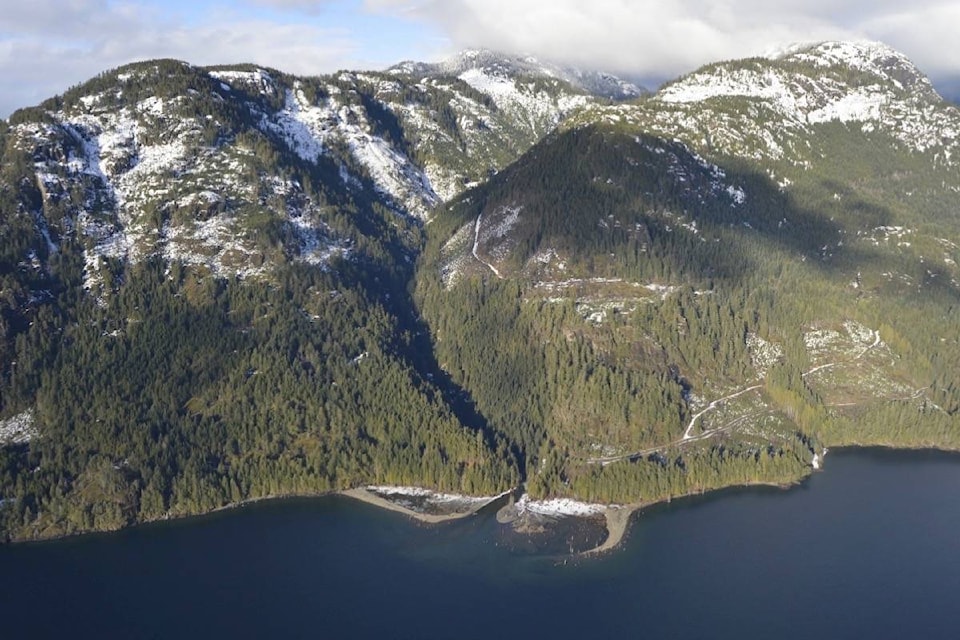Several communities in the Comox Valley and the K’ómoks First Nation launched a $367,500 multi-year initiative with the Municipal Natural Assets Initiative (MNAI) this month to help better understand, measure and manage critical drinking water services provided by nature.
The Comox Valley Regional District, City of Courtenay, Town of Comox, Village of Cumberland and the KFN signed a memorandum of understanding with the MNAI to value natural assets in the Comox Lake watershed which provides safe, reliable drinking water, and environmental, cultural and economic benefits to the valley.
Local government services depend on infrastructure like roads, pipes, sewers, libraries and buses. This project is based on the idea that nature is also crucial to the livability of our communities and to providing core services. For example, forested watersheds provide clean drinking water, wetlands protect communities from floods and vegetated banks protect home properties from erosion – as well as may other benefits.
“Action on climate change is something we simply cannot defer. That is why our government is supporting projects that will expand our understanding of the impacts of climate change and better prepare us to adapt to those impacts,” said Amarjeet Sohi, Canada’s Minister of Natural Resources.
“Like many other local governments across the country, the CVRD recognizes that healthy natural assets play a key role in delivering essential services at a lower lifecycle cost,” CVRD chief administrative officer Russell Dyson said. “We are committed to working together with our regional partners to manage our water resources. This initiative supports our community’s shared goal of providing a secure supply of reliable, high quality drinking water for the future.”
“In 2018, the City of Courtenay partnered with the Municipal Natural Assets Initiative to determine how natural assets could help us manage flood risks. We’re very encouraged that this original project has provided impetus for a regional initiative focused on drinking water,” said David Allen, CAO of the City of Courtenay.
“We are delighted to be working with dynamic partners to better understand and manage the watershed’s natural assets to provide clean drinking water for the long-term. Once we understand the natural assets service provision value, we will work with project partners to develop strategies to manage them deliberately and effectively to ensure their long-term health, as routinely happens with engineered assets,” said Michelle Molnar, Technical Director for the MNAI. “The MNAI team will bring to the table leading-edge tools, methodologies and the evidence gathered from our partner local governments across Canada.”
“Protecting the health of the watershed surrounding our community is vital to the Village of Cumberland,” said Sundance Topham, Cumberland CAO. “The Village receives its drinking water from these lands, and we’re committed to doing as much as we can to better understand and protect this natural asset in a holistic manner.”
The project is supported by Natural Resources Canada’s Climate Change Adaptation Program ($137,500); the Province of British Columbia’s Ministry of Municipal Affairs and Housing ($125,000); and the Smart Prosperity Institute ($12,500 in kind). The participating local governments themselves will contribute a total of $105,000 over the project period. These funds will cover detailed guidance material, workshops, technical support, economic analysis, modelling and the development of strategies and methods for long term management of natural assets in the watershed. The project will be delivered through the Comox Valley Water Committee.
The Municipal Natural Assets Initiative was originally a partnership between the David Suzuki Foundation, Smart Prosperity Institute, the Town of Gibsons and Brooke and Associates Consulting, and now operates as a not-for-profit society. It offers solutions to the problems of aging infrastructure and ecosystems decline facing Canadian municipalities. It does so by supporting municipalities to integrate natural assets (e.g. floodplains) into core asset management and financial processes. This means that natural assets are understood, managed and valued by municipalities in terms of the services that they can provide (e.g. flood management).
The Town of Gibsons pioneered municipal natural asset management. The Municipal Natural Assets Initiative refined and scaled up their approach in the City of Nanaimo, City of Grand Forks, District of West Vancouver, Region of Peel and Town of Oakville in 2016/17. This approach is now being implemented in a second national cohort, the watershed level project in the Comox Valley, and in Ontario’s Greenbelt. To date, the evidence from these communities is that:
•Municipal natural asset management helps municipalities manage risk by better understanding the services from natural assets that are not yet accounted for; and,
•Natural assets can provide the same service as engineered alternatives but with no capital cost and lower operating costs, and their value can appreciate over time.
FMI: www.mnai.ca
